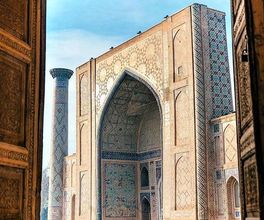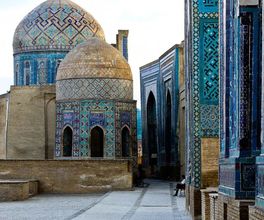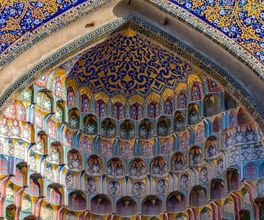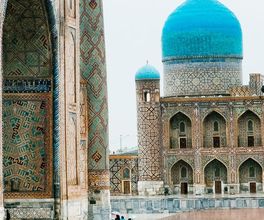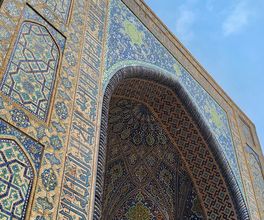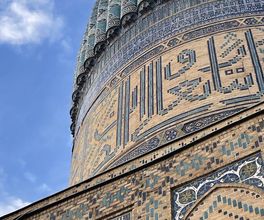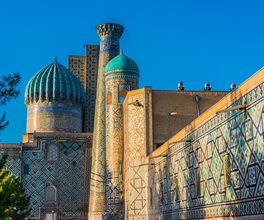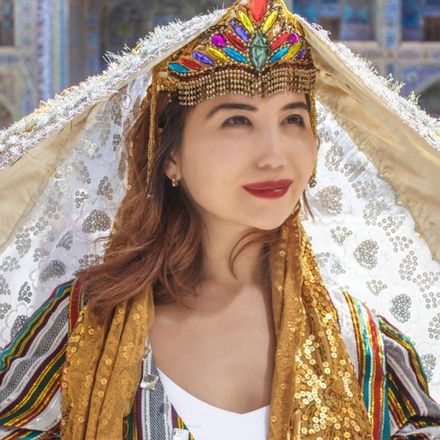




About this experience
The monumental structures adorned with glazed ceramics, intricate mosaics, and blue minarets exude the spirit of the great Tamerlane and his dynasty. The vivid attire, spices, and fruits at the Siab Bazaar hark back to Samarkand's 2000-year significant presence along the Great Silk Road. The famous observatory of Ulugbek serves as a reminder of the city's role as a center of science in medieval East. I will help you unravel the history of the former empire's capital, tell you about its iconic monuments and local traditions. During a visit to an Uzbek family, you will taste national dishes prepared at home.
What to Expect
Historical Heritage of Samarkand
Our city is one of the oldest on the planet. For two thousand years, it was a crucial point of the Great Silk Road and one of the most influential centers of science in the medieval East. Imagine how much Samarkand has witnessed in its journey! During the tour, you will learn about its origins, the endless cycle of invasions, destructions, and reconstructions, as well as the amazing blend of different cultures. Exploring the key monuments of the 14th-17th centuries, you will get acquainted with the history of the legendary Tamerlane and his Timurid dynasty. I will also talk about the period when Samarkand became the capital of an empire that inspired fear and admiration among conquerors.
The Heart of the City and Tamerlane's Most Successful Project
In the ancient Registan Square, you will find yourself in a real eastern fairy tale of Central Asia. Here, I will tell you about the three ancient madrasahs - medieval universities - and the various cultural programs held in the most visited place in Uzbekistan. Then, along Tashkent Street, you will reach the 15th-century Bibi Khanum Mosque, the largest medieval construction in Central Asia. We will discuss how the mosque became Tamerlane's most successful project and the countless myths and legends that are intertwined with the history of this iconic monument.
Majestic Mausoleums
You will visit the 'Tomb of the Ruler' - Gur-Emir, where the burials of Tamerlane and his closest relatives are located. You will hear the most famous legends of the mausoleum, which served as a prototype for the Taj Mahal, and delve into the principles of traditional Central Asian architecture. On the hills, known as the cradle of Samarkand, you will explore the complex of 12 mausoleums of Shahi Zinda from the 12th-19th centuries. Examining the ensemble of burial structures of the Samarkand nobility, you will be able to realize the grandeur of that era and also see an important place for Muslims around the world - the tomb of the Prophet Muhammad's cousin.
Ulugbek's Observatory
In addition to the religious architectural monuments, you will visit the observatory of Tamerlane's grandson - Mirzo Ulugbek, with the only preserved instrument for studying stars. We will talk about the difficult fate of a man born during religious prohibitions, his fundamental research, bold decisions, and important discoveries. We will also discuss the history of building the largest observatory in the East in the 15th century, which was one of the most significant in the entire medieval world.
What Makes Samarkand Live and Breathe
The vibrant life 'from the inside' will be revealed to you in the most authentic place in Samarkand - at the Siab Market. After all, in the East, they say, 'we get to know the city through the bazaar.' Inhaling the aromas of spices, exploring the variety of fruits and vegetables, admiring the colorful attire of the locals, you will get acquainted with the ancient traditions of trade and the events that take place in the main center of attraction for the local residents. Later, you will be welcomed by an Uzbek family where you will taste home-cooked dishes: fragrant pilaf, flaky samsa, or lamb baked in a tandoor. They will show you the distinctive decor of the house, tell you how life is organized, and treat you to wine.
🎭 As an additional option, I will suggest visiting the Theater of Historical Costume, where you will watch an ethnographic performance. The program will include performances of artists in costumes from different eras to the national music. After the show, you can relax in a tea house, enjoying Eastern sweets and aromatic tea.
Organizational Details
What's Included and What's Not
- Entrance tickets are not included in the tour cost (according to the standard program, the total price is ~$13/person), dinner with the family, wine tasting, and the theater of historical costume (~$15/person).
- Transportation expenses: sedan - $35, minibus (for groups of 3 to 6 people) - $50.
Tour Process
- I will personally conduct the tour for you or another professional guide from our team.
- We will meet you at the hotel or train station and take you back after the tour.
